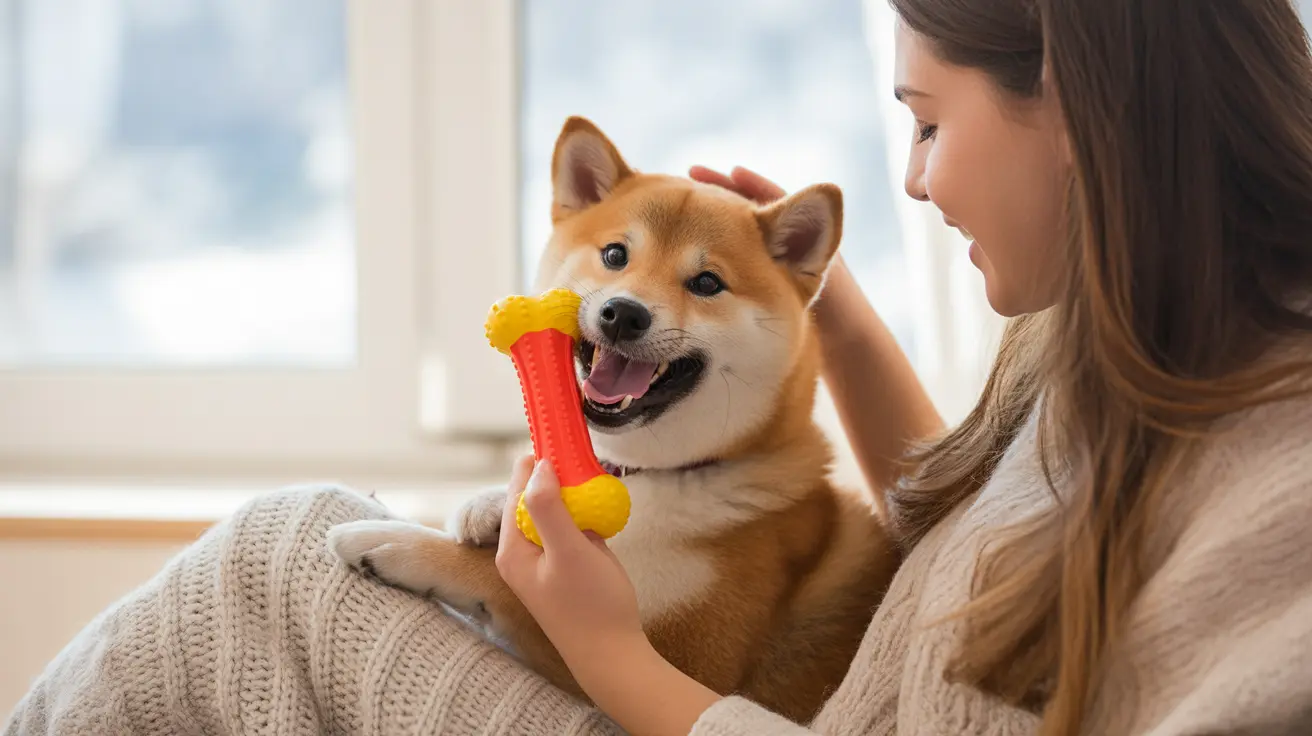If you've ever wondered why your furry friend insists on chewing their toys while sitting on your lap or pressed against you, you're not alone. This common behavior, while sometimes puzzling to pet parents, actually carries deep significance in terms of your dog's emotional well-being and social bonding instincts.
Let's explore the fascinating reasons behind this behavior and what it reveals about your relationship with your four-legged companion.
The Social Significance of Toy Chewing
When your dog chooses to chew their toys on you, they're actually engaging in a complex social behavior that goes beyond simple play. Dogs are pack animals by nature, and this behavior demonstrates trust, comfort, and a desire to strengthen their bond with you as their chosen family member.
Attention-Seeking and Social Bonding
Many dogs use toy chewing as a clever way to initiate interaction with their owners. By choosing to chew their toys while in physical contact with you, they're explicitly requesting your attention and participation in their activity. This behavior often serves as an invitation to play or simply share a moment together.
Safety and Security Signals
Dogs typically only display vulnerable behaviors, such as focused chewing, when they feel completely safe. When your dog chooses to chew their toys while pressed against you or in your immediate vicinity, they're demonstrating their trust in you as their protector.
Comfort and Stress Relief
For many dogs, the combination of physical contact with their owner and the repetitive action of chewing creates a calming effect. This behavior can help them manage anxiety, cope with stress, or simply reinforce their sense of security within their environment.
Natural Instincts and Pack Behavior
In the wild, dogs would often bring their prizes back to share with their pack. When your domestic dog brings their toy to chew near you, they're exhibiting this ancestral behavior, treating you as a valued pack member. This action also serves to strengthen social bonds within their perceived family unit.
Age-Related Considerations
Puppies, in particular, may seek out their owners while chewing due to the discomfort of teething. The combination of your reassuring presence and the relief provided by chewing creates a positive association that can persist into adulthood.
Managing and Responding to the Behavior
While this behavior is generally harmless and even beneficial for your relationship with your pet, it's important to establish appropriate boundaries. Ensure your dog has a variety of suitable toys and that they understand which items are acceptable for chewing.
Training and Positive Reinforcement
If your dog's chewing becomes excessive or problematic, redirect them to appropriate chewing spots using positive reinforcement techniques. This helps maintain the social benefits while preventing any potential issues.
Frequently Asked Questions
Why does my dog chew his toys while sitting on or near me?
Dogs chew toys near their owners to demonstrate trust, seek attention, and strengthen social bonds. This behavior indicates they feel safe and secure in your presence and want to include you in their activity.
How can I tell if my dog is chewing toys to seek attention or because of anxiety?
Attention-seeking chewing is usually accompanied by playful behavior and eye contact, while anxiety-related chewing may involve more intense focus, pacing, or other signs of stress such as panting or whining.
What does it mean when my dog brings toys to me and starts chewing them?
This is typically an invitation for social interaction or play. Your dog is demonstrating their desire to share their valued possession with you and engage in bonding activity.
How can I train my dog to chew toys appropriately without chewing on me?
Consistently redirect your dog to appropriate chewing spots, provide suitable toys, and use positive reinforcement when they chew correctly. Create designated areas for toy play and chewing.
Are certain dog breeds more likely to chew toys on their owners due to instinct?
Yes, some breeds, particularly those bred for retrieving or hunting, may be more prone to this behavior due to their inherent drive to carry and present items to their handlers.
Conclusion
When your dog chooses to chew their toys on you, they're expressing trust, seeking connection, and engaging in natural pack behavior. Understanding this can help you better appreciate and respond to this endearing habit while maintaining appropriate boundaries for both you and your pet.






